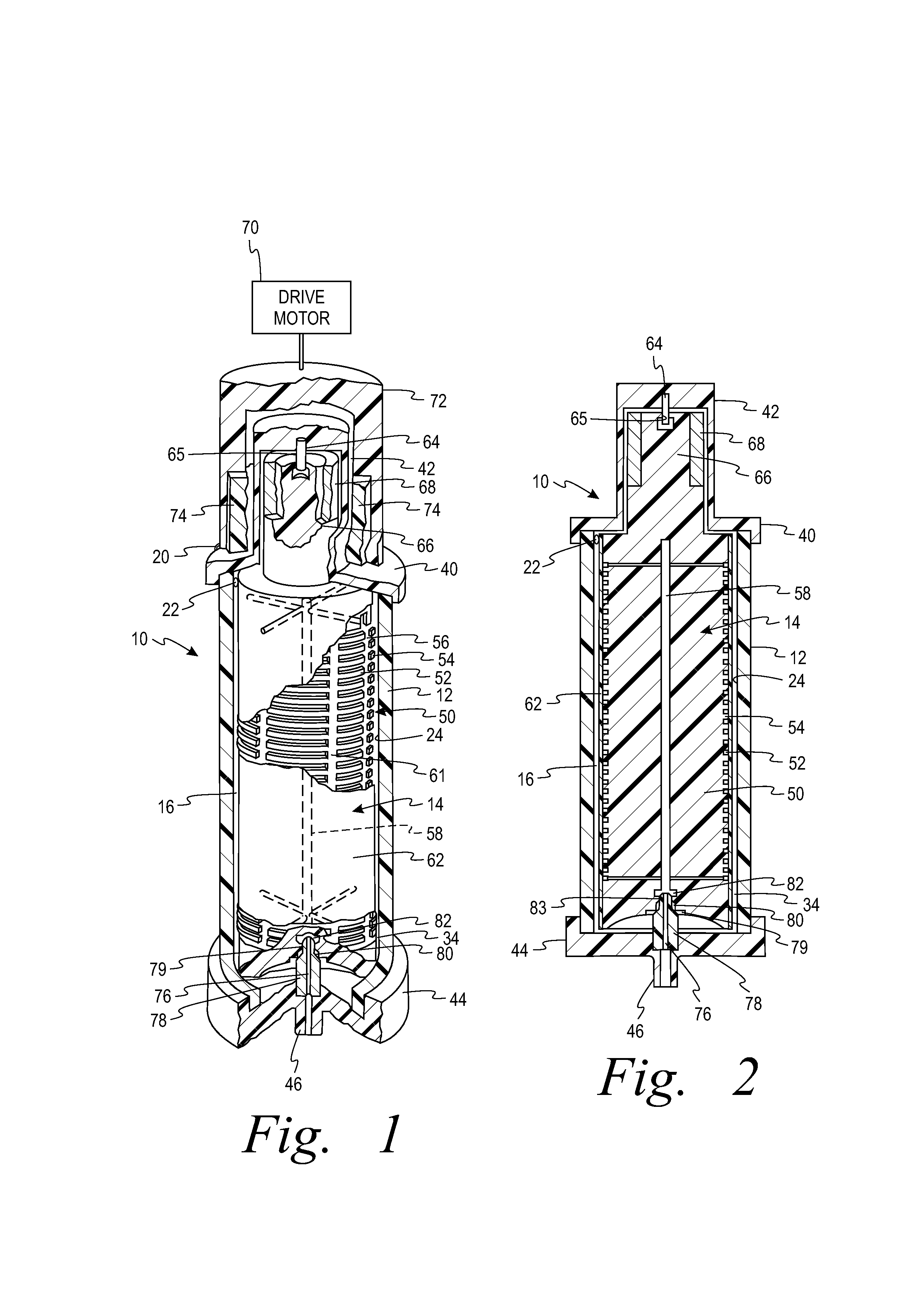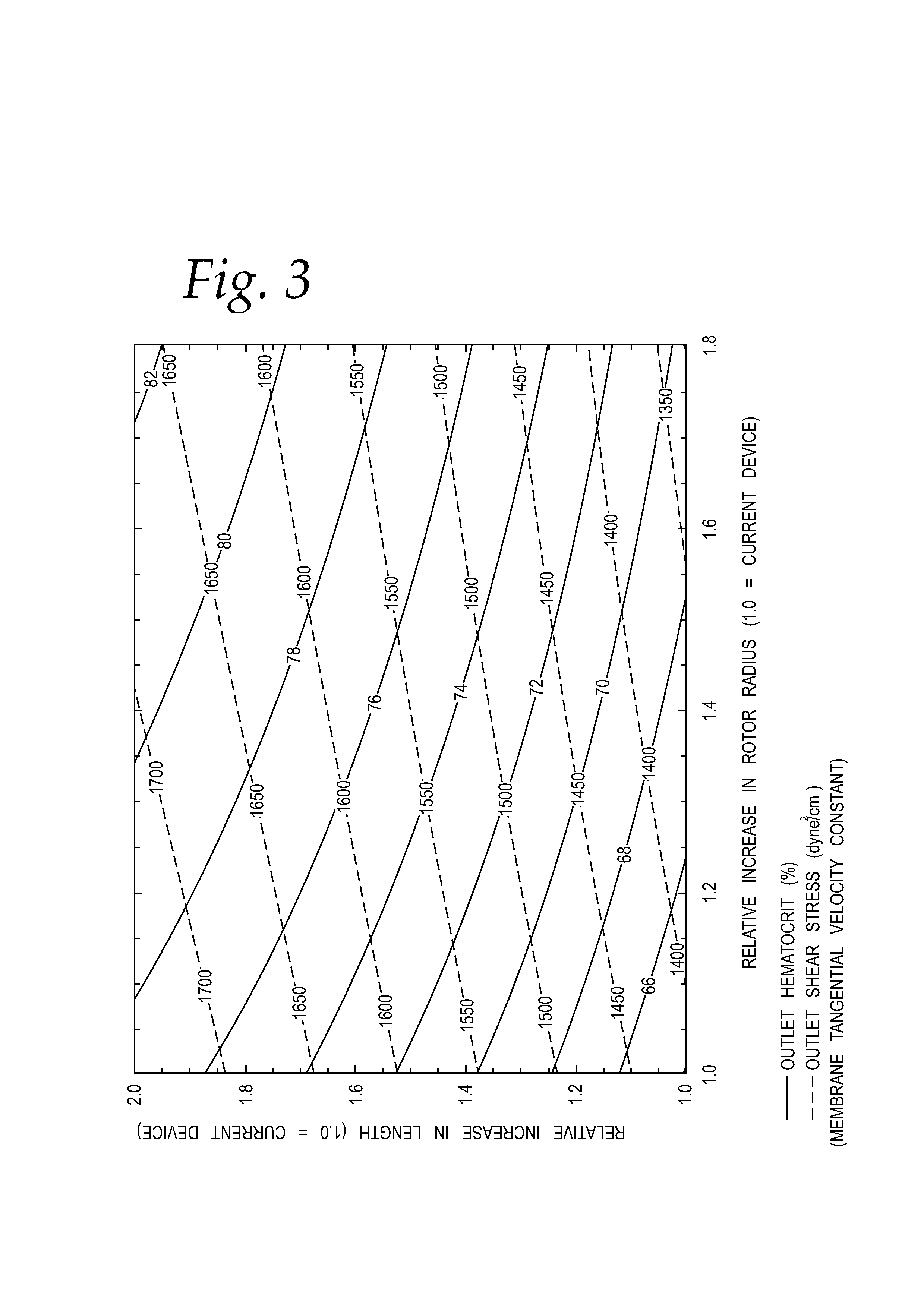Membrane separation devices, systems and methods employing same, and data management systems and methods
a technology of membrane separation and data management system, applied in the field of membrane separation device, system and method employing same, data management system and method, can solve the problems of increased human error or mistake potential, time-consuming process, labor-intensive process, etc., to reduce the number of platelets, increase efficiency, and maximize the collection of red cells
- Summary
- Abstract
- Description
- Claims
- Application Information
AI Technical Summary
Benefits of technology
Problems solved by technology
Method used
Image
Examples
Embodiment Construction
[0057]A more detailed description of the spinning membrane separator in accordance with the present disclosure and its use in various automated systems is set forth below. It should be understood that description below of specific devices and methods is intended to be exemplary, and not exhaustive of all possible variations or applications. Thus, the scope of the disclosure is not intended to be limiting, and should be understood to encompass variations or embodiments that would occur to persons of ordinary skill.
[0058]Turning to FIGS. 1 and 2, a spinning membrane blood separation or fractionation system, generally designated 10, is shown. Such a system 10 is typically used to extract plasma from whole blood obtained from an individual human donor. For ease of understanding, only the plasma separation device and the associated drive unit are shown, although it should be understood that such a separator forms part of a disposable system including collection bags, bags of additives su...
PUM
| Property | Measurement | Unit |
|---|---|---|
| gap width | aaaaa | aaaaa |
| gap width | aaaaa | aaaaa |
| gap width | aaaaa | aaaaa |
Abstract
Description
Claims
Application Information
 Login to View More
Login to View More - R&D
- Intellectual Property
- Life Sciences
- Materials
- Tech Scout
- Unparalleled Data Quality
- Higher Quality Content
- 60% Fewer Hallucinations
Browse by: Latest US Patents, China's latest patents, Technical Efficacy Thesaurus, Application Domain, Technology Topic, Popular Technical Reports.
© 2025 PatSnap. All rights reserved.Legal|Privacy policy|Modern Slavery Act Transparency Statement|Sitemap|About US| Contact US: help@patsnap.com



